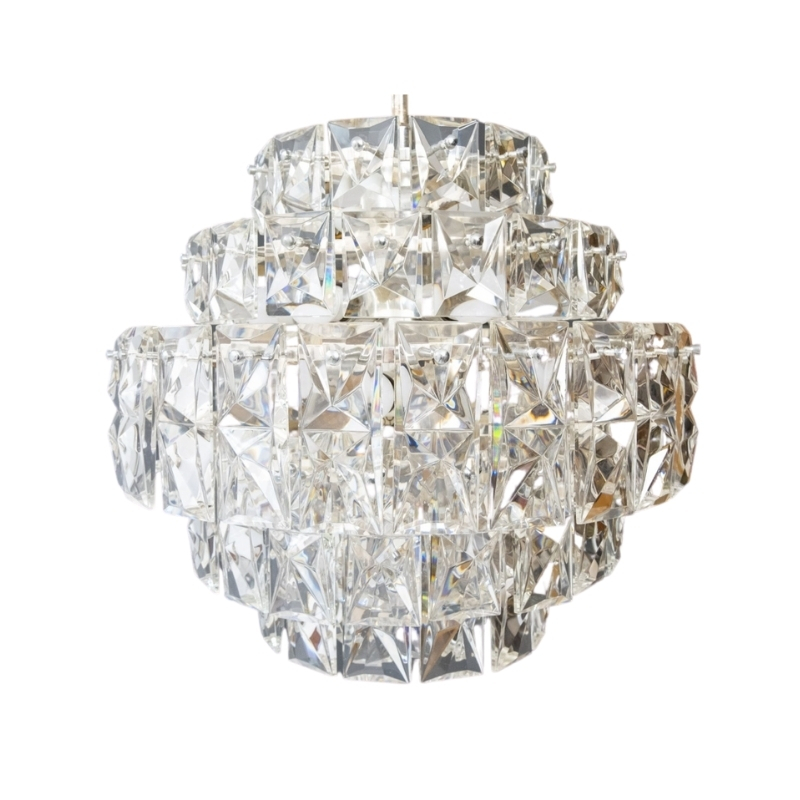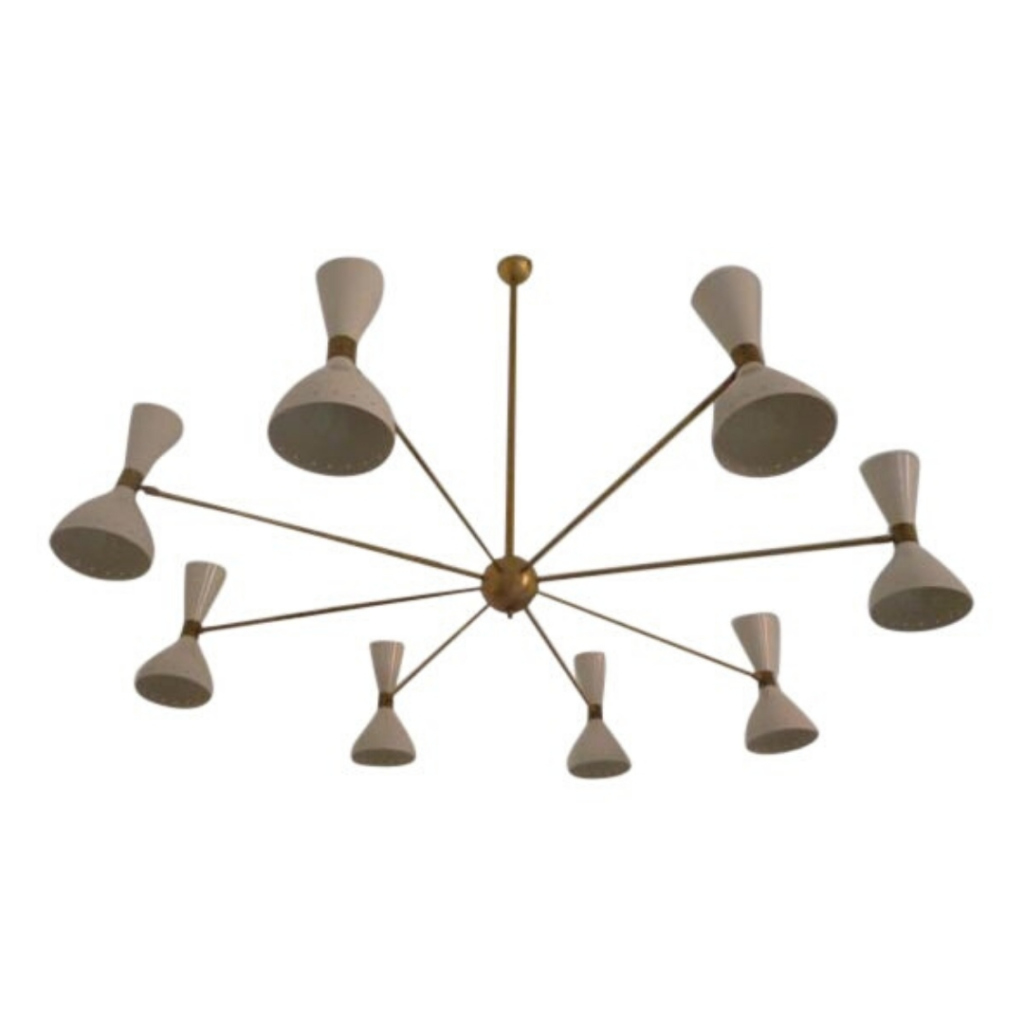so streamlining was not a...
so streamlining was not a design movement, it was a style. an important distinction......
Intersting that streamling was not a movement.... I thought thatsyles become movements... When Raymond Lowey was changing the locomotives from old rust buckets to sleek bullets that caused a movement in that industry.
lots of cars coming out of europe at that time created the tear drop effect ( i read cause of sad times) then the american designers adapted to them .
I guess i was wrong again ... I am hitting rock bottom with all the
Rhodes scholars out there...
In addition to dcwilson's
interesting contribution...and frequent abuse of my name...
I think that the complex relationship between designer and consumer deserves a close look. Not at the relationship itself but at the means by which the dialogue or lack of dialogue is taking place. To a large extend the period preceeding the industrial revolution was characterized by a almost direct dialogue between artisan and client. Most artists like artisans would paint, sculpt, engrave and illustrate according to instructions given by there patrons. Sometimes these instructions included the theme, especially when portraits were made, but also the amount of certain colours in painting, the materials in sculpting, etc. Products made for a large number of people hardly existed and so style etc. was often decided by the authority of the one that paid for the piece or kept almost generic with hardly any form or style.
Inevitably the industrial revolution created a need for "design" as a process by which shape and function were decided not "by" but "for" the user. The traditional way, to decide by authority, had deep roots and it is therefore not surprising that the first self-proclaimed designers turned to two types of authority to find there way in this new field. The first was an ideological one the second the authority of the inevitable production technology. This last one was rather simple. Some things could be made industrially and others not and so a "form-language" compatible to the existing technologies was developed. It has taken some time before designers understood that this "machine language" was inadequate and misguided, but that is a different story. The ideological one was more complicated, but it moved between the recognition of traditional values (William Morris) to standards inspired by nature (Jugendstil), or the value of the creative mind (Henri Van De Velde) and finally the dominance of reason and rationality (Herman Muthesius). Everything ever since has been a different mix of these values, with one exception. By the end of the 20th century, the urban environment had succesfully complemented and to some extend replaced the natural environment as a source of inspiration and so designers started to borrow from an "Urban-form-language" in the same way as the Art nouveau/Jugendstil had borrowed from nature. A role or the role for the user was hardly recognized other than as a passive element in the equation that would have to accept whatever designers designed for them simply because designers pretended to know what was best for them. The failure to connect with the user resulted in a almost outright rejection of these new choices by the users. To them, the industrial revolution was first and foremost a way to access those products that had been the products of the elite and so they adopted the styles of the past rather than those of the future.
cont.
Others were willing to adopt new standards as long as they made the product affordable and as long as they were not restricted to the purist rigour of the new styles. Those attemps resulted in what was first known in Germany as "Kitsch" or low taste, low quality, formal cliches. Until the "Apologie der bösen Form" (The justification, or in defence of ugly form) was written and published (early 60ties if my memory serves me well), the concensus amoung designers, and architects for that matter was that the consumer or user should not be listened to but be educated. And so, they did. Design centers, design conferences, courses, ideal homes etc. were permanent and temporary show cases for "exemples of good design". The rational was still that balance between culture, technological feasibility and function that was translated so well in the original "Form follows function" was best for the consumer. Obviously the only real barrier to overcome was the education of the unwilling public. When those methods did not work, the industry took it's destiny it it's own hands and embraced the concept that they could convince the consumer by filling in the gap between their vision of their users and the real ones by all forms of advertizing. In fact the more ignorant the industry is about the real needs of the user the more they spend on advertizing. Showing pleasant, attractive etc. situations in combination with their products is never informative, it is a way of giving the user the illusion that their product is in fact a bridge between the everyday reality and the ideal situation. One of the better exemples of that is a car commercial here that shows someone driving on completely empty roads and streets. Only when he opens the door of the car the full reality of traffic and city noise comes back...In other words your car is a way of eliminating the harch reality of your over-crowded daily commute....which is caused by your car and all the others...how brilliant! So...drinking beer becomes a way of meeting girls with cowboy hats, 4x4 climb mountains etc.
The reality of it all is that we have no real tools for measuring what the user wants and how he or she wants it. The most un-reliable amoung them: the focus group has become a goldmine in the hands of those who sell the service to more and more uncertain product managers that replace research, creativity and common sense with tools that cover their backs. Every failure is justified by: "Yes! but the focus group....". As I have argued in an short essay on this site about originality, designers on the other hand have turned to ever changing false, yet innovative solutions to escape the more important task of really trying to find out what the consumer hope for and the user needs.
The real question is not
lrf
dear lrf, I detect a measure of sarcasm with the rhodes scholar comment in your response (hard to truly judge without body language and vocal inflection). If this is not the case please ignore this response. If it is there i respectfully wish to withdraw from this portion of the conversation. I have no interest in upsetting anyone over this subject and i apologise. My intent with this and any other post i put here is to learn and in this case i am am being joyously schooled by the responders. I do this from the understanding that what i know about the world would fit in a small thimble and even this tiny amount i question on a regular basis(hence my origonal post). please do not take my not wishing to respond as a position of rightousness on my part (as i sit here with slumped shoulders). It is merely that i try to prioritize what i get heated about and though i am passionate about design i cant justify upsetting anyone on this subject. I have reread my comments to you and i dont think i personalized it in any way. But i realize that it doesnt mean it was taken the way i meant it and so my apology. bill teschner
Alright, old what's-your-name...
(there, I didn't abuse your name), it seems to me that the focus group is not an intrinsically bad approach to finding out a) what a group of persons thinks of a product; or b) what they would like in a product. But what a focus group cannot tell you is what they can't conceive of as being feasible, or simply can't conceive of.
Microsoft's engineers supposedly have developed thousands of softwares that are so unprecedented in what they are capable and how they do it, Microsoft does not even bother to bring them to market, because it is too hard to make persons understand what they might try to do with them.
One classic example of a borderline understandable software that they did bring to market is Microsoft Infopath. It is a piece of software for sending queries about a subject to persons which they then respond to electronically. That much of the concept is pretty easy, though a lot of persons would say, why not just send out an email? Infopath creates a form that allows the respondent to put the information into a database format without even knowing he is doing it as he answers the questions. The information comes back ready for dumping into Microsoft Access, or Excel. All well and good so far. But then the problem comes trying to explain to persons sending the queries how exactly Infopath does what it does, so that modestly sophisticated computer users can figure out how to manipulate the files created and understand the differences between schema files, form files and template files and text files. Now its not very hard, but even computer saavy persons start going but which kind of file is what and which kind of file do I keep and which kind of file do I send, and so on. Why do computer literate users have this problem? Because they are used to (conditioned to, trained to?) software that only creates one kind of file, or at least confronts you with only one kind of file. And they find it hard to think of more than one or two things at a time. Three kinds of files? Just to send out a query and get it back in a ready for QA format? Give me a break...
Alright, old what's-your-name...Pt.2
Where I'm going with this example is this: designers are being drawn by the rising tide of technology into the same problem software firms have been struggling for a long time now. Alot of what's new and needs designing increasingly has strange new technological dimensions. And even if they don't there seems these days to be a human predilection that afflicts designers as well as the rest of us to technologize, i.e., complexify and routinize activities with structures and orders almost without knowing it.
Take the hexagonal flower vase for one immediate example. We all got very jazzed, me included, about a hexagonal grate on the top of the vase both for its aesthetics and for the spatial channelling of flower arrangement we believe the vase facilitates for persons putting flowers in vases. But do they need this? Does it actually help them be creative in their flower arranging, or does it take the creativity out of it? Does it make it harder rather than easier? Do people really arrange flowers one at a time, or do they work in clumps? Does the grate prevent some clumping of flower shoots that actually make for good flower arrangements? Do persons really need this much channelling of flower arranging? We really didn't ask these questions, much less answer them. We simply got very jazzed about adding a technology to a flower vase--a hex grate on top. It is a technology, just as surely as a flower vase is a technology. A vase is a machine for holding flowers for us. A hex grate is a machine for evenly distributing flower stalks within a vase. Now these are machines without moving parts, but they are machines nonetheless. Or you might like to call them tools. Whatever. We made a more complicated flower vase. Did we violate Wegner's rule of taking away everything that isn't necessary in making our flower vase? Did we proceed from a flower base that required no explanation in use to one that requires explanation? If yes, and I think the answer is yes, is the consumer getting enough extra utility to make an increment of education worthwhile? Do ordinary persons like hexagons as much as designers? Or do they prefer simpler geometries? And so on.
Alright, old what's-your-name...Pt.3
At the center of this example of our vase is the issue of the dialogue between designer and user. Did the dialogue among ourselves constitute a dialogue with a user, model one, or fool us into thinking it did? Did we know any more about the consumer and what he wants after the design process than before it?
In some ways I think we did learn more about the consumer, but then I am concerned that we only listened to the part of the consumer that allowed us to make some thing more complex, something more technological. Despite its wonderful aesthetics, we have a more complicated mouse trap. Have we trapped ourselves, or the consumer, or both? Or did vases need a bit more complexity and technology embedded into them to make them work better? This seems one very central question for design in an advanced.
technological age. Does the thing being designed need more technology, or less?
apology not needed
There are so many people out in design land that are so much smarter than me . I feel lucky to get my password correct .
Design is my passion as is Architectural History . I try to get the facts as correct as i have committed them to my brain.
any one that wants to correct me or add to my comments, I welcome them cause I am the first to admit
unlike a lot of others on design addict... I don't know it all and
always like to know more.
more or less
dcw - your last question is getting to my current itch - namely where is the place of technology in design now. To me it seems central to the problem of the designer being less of a force for change and education now than the early modernists. i am hoping that responders might comment on the evangelical nature of previous design movements dealing with industrialization either through rejection (morris), acceptance (bauhaus), or humanizing (organic,scandinavian) and that evangelical zeal is being reborn in the sustainable design movement. it seems to me that we are at a point where this is the only type of design that matters given our current survival issues. will we be seperating the idea of technology from the idea of advanced? And am i getting a funny idea that sustainable issues are world changing like industrialization was and therefore sustainable design has an essentially modernist force of purpose? is it the new modernism?
dealing with industrializatio...
dealing with industrialization either through rejection (morris), acceptance (bauhaus),
If i remember at the time Hitler the %^&*$#@ hole rejected the Bauhaus as to radical for his country I do know the design community likeg the ideas that came out of the Bauhaus. and moving it out of Germany .
While I had to do other things...
dcwilson completed some of my thoughts. I am grateful for that becaus eit is so much more readable. Before continuing the discussion I would like to come back to my experience with focus groups as being unreliable. Some years ago, suspecting that too many factors influenced the outcome of a focus group, I repeated focus groups on the same subject, just altering the order in which the participants were seated, changing the balance between oral and written answers and changing the sequense of the questions. In doing that I was amazed to find out that you could actrually get exactly the opposite results out of different focus groups with the same demographic and socio-economical profile. Thes experiments have made me very suspicious. The other reason is that it seems to be very difficult for many users to think in a prospective way, anticipating needs rather than formulating them. But most of all I thought of my compatriot Marchal McLuhan and his statement that "the medium is the message" In our case I think that the message is the medium, and our best means of communication are the products themselves. They are either rejected or accepted by the users and the user's wishes are expressed by this rejection or accepance.
A smaal note on the comment about National socialism being responsible for the closing of the Bauhaus. I think that a very large role was played by internal struggle especially under Mies v.d.Rohe. who had a hard time containing the fractions, especially the kommunist one.
Koen...
This is a huge insight about focus groups. Its important. It needs to be turned over to a university marketing professor and he needs to get a grant to study this with statistical rigor. This experiment of yours could be done in even more systematically controlled testing and blow this field wide open once and for all. I really do think this is important. We all know that polling research in politics can be radically altered by the way the questions are composed, order and put to the respondent. I don't know why I never made this obvious connection with focus groups. Really, this needs to be studied and the results submitted to a peer reviewed journal. If your findings hold up, it means vast sums of monies are being wasted on focus research and huge amounts of capital are being put at risk based on invalid methodology. On second thought, the marketing department of a major university may not be the place to undertake this research. The professor/gate keepers at the peer reviewed journal will be heavily invested in focus group research and might not be willing to consider refuting it as a valid means of research. The better place to get this studied would be in a finance and investment analysis department in a major business school. the goal for the research would be to explore and expose the investment portfolio risk traceable to firms relying heavily on focus group research. portfolio managers have a strong desire to weed out as many forms of risk as feasible. moving away from focus research, if it is as flawed as you suspect, would greatly reduce the risk of bringing products to market. This reduced risk would greatly increase the capitalized value of the stock, other things equal.
Really, this is potentially very important.
koen
your message is the medium thought begs a questioning of who is the appropriate arbiter of design. do we have educated, informed designers rule the roost or bow to the will of the consumer? in my field, art, there are many cases where a certain level of familiarity with the visual language system that is art is essential to understanding a work beyond a basic level. it is not elitism either. no reasonable lay person would call a sceintist elitist just because they dont understand a theory. it is a given that that science is merely a specialty that requires explanation. the problem for art and design is people assume that there need be no effort put forth to understand the products of these fields. it is a failure of education that people make these false assumptions. i personally have studied art for many years and am now educated enough to have some idea of how little i know on the subject. i would be wary of the undereducated in any field calling the shots (myself included). accepting without understanding is a process that has fostered many of our worst problems.
If you need any help, please contact us at – info@designaddict.com









